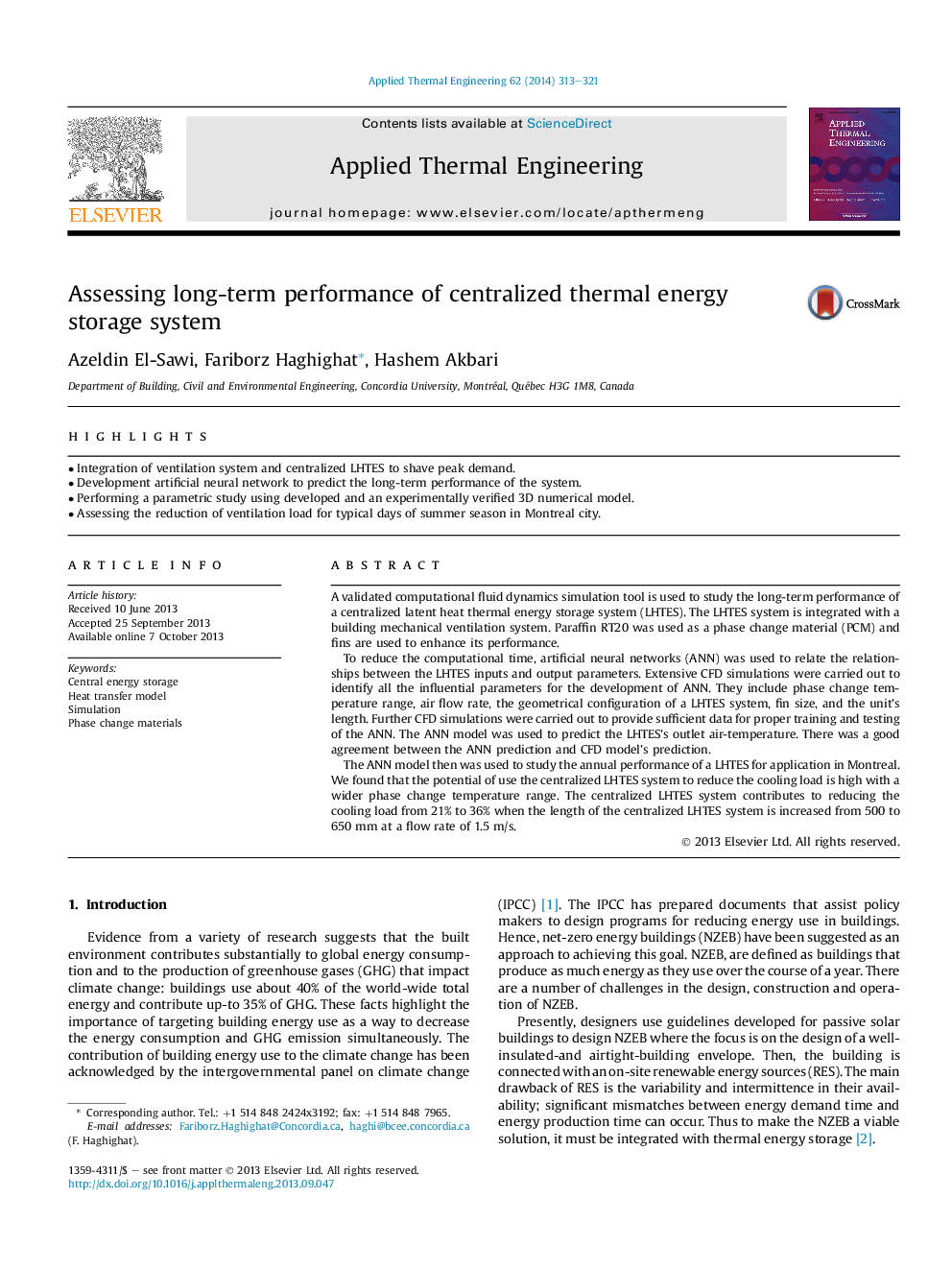| کد مقاله | کد نشریه | سال انتشار | مقاله انگلیسی | نسخه تمام متن |
|---|---|---|---|---|
| 646343 | 884561 | 2014 | 9 صفحه PDF | دانلود رایگان |
• Integration of ventilation system and centralized LHTES to shave peak demand.
• Development artificial neural network to predict the long-term performance of the system.
• Performing a parametric study using developed and an experimentally verified 3D numerical model.
• Assessing the reduction of ventilation load for typical days of summer season in Montreal city.
A validated computational fluid dynamics simulation tool is used to study the long-term performance of a centralized latent heat thermal energy storage system (LHTES). The LHTES system is integrated with a building mechanical ventilation system. Paraffin RT20 was used as a phase change material (PCM) and fins are used to enhance its performance.To reduce the computational time, artificial neural networks (ANN) was used to relate the relationships between the LHTES inputs and output parameters. Extensive CFD simulations were carried out to identify all the influential parameters for the development of ANN. They include phase change temperature range, air flow rate, the geometrical configuration of a LHTES system, fin size, and the unit's length. Further CFD simulations were carried out to provide sufficient data for proper training and testing of the ANN. The ANN model was used to predict the LHTES's outlet air-temperature. There was a good agreement between the ANN prediction and CFD model's prediction.The ANN model then was used to study the annual performance of a LHTES for application in Montreal. We found that the potential of use the centralized LHTES system to reduce the cooling load is high with a wider phase change temperature range. The centralized LHTES system contributes to reducing the cooling load from 21% to 36% when the length of the centralized LHTES system is increased from 500 to 650 mm at a flow rate of 1.5 m/s.
Journal: Applied Thermal Engineering - Volume 62, Issue 2, 25 January 2014, Pages 313–321
